Mainframe (MFT) Review – Decentralized WEB3 Communications Layer
Mainframe’s goal is to secure the current holes in the privacy and security in the current architecture on which the internet is built. The new tools Mainframe provides includes data privacy, surveillance resistance, and censorship resistance. Its robust network security aims to provide a web3 communications layer without compromising convenience.
Article Summary
- The Idea and the Team Behind Mainframe
- The Mainframe Technology
- The Mainframe Tokens
- The Mainframe Network
- The ICO and Roadmap
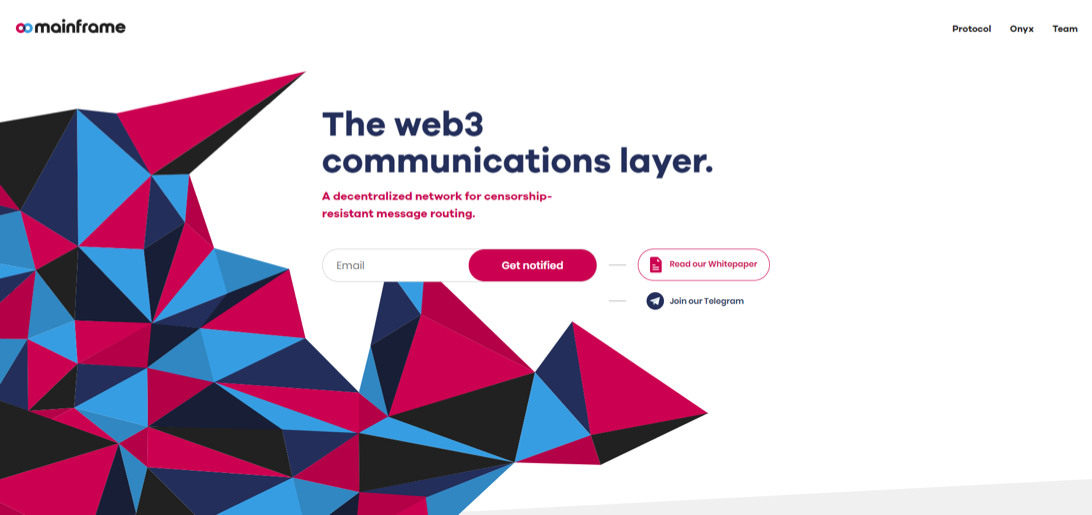
The Idea and the Team Behind Mainframe
Mainframe was developed based on the idea that centralization threatens privacy and freedom. They strongly believe that you should have access to and control of your own data online and that the tools you use should empower you to reveal and share only what you choose.
Since the first block of bitcoin was developed in 2009, the world has seen a continuous decline in the trust of governments, corporations, and media. From the Arab Spring protests and Occupy Wall Street protests in 2010 and 2011 to the Yahoo breach that compromised all 3 billion Yahoo accounts in 2013 and the hacking of campaign manager John Podesta in 2016, more and more people are coming to the realization that centralization of the internet comes at a huge cost.
Mainframe’s vision for solving these serious privacy and security breaches is a fully decentralized and unstoppable communications network. It is working hard laying the foundation for an essential layer of the new web – a web3 communications layer.
The Mainframe team is composed of CEO Mick Hagen, previous founder of Zinch, a company that helped students find scholarships and engage in college networking and recruiting and was acquired by Chegg in 2011. Carl Youngblood, the CTO, has over twenty years as a full stack engineer specializing in highly scalable web applications. His experience in blockchain tech goes back to 2010. The team has about a dozen members based mostly in London.

The Mainframe Technology
Mainframe’s technology offers a secure solution for data services and file storage. But before you understand it further, you’ll need to learn a bit about the way the internet works today. First of all, computers connect to the internet through a public IP address or proxy with which the geographic location can be determined fairly accurately.
Mainframe provides a peer-to-peer network that functions as a virtual network above the Internet Protocol Suite that makes it impossible to determine the location of nodes. This prevents the nodes from being targeted by hackers.
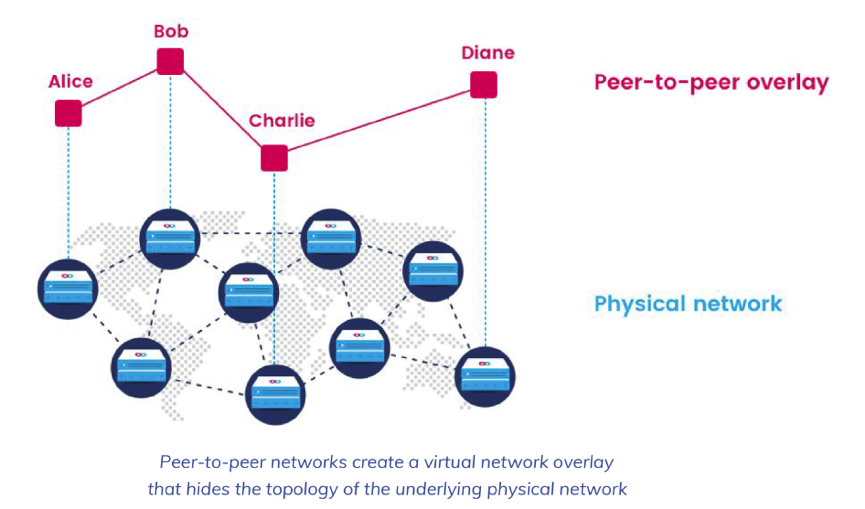
These nodes provide opportunities for communication between layers, including interfaces for blockchain transactions, packet routing, packing holding, file storage and data services. These communications are all done with a decentralized and unhosted service.
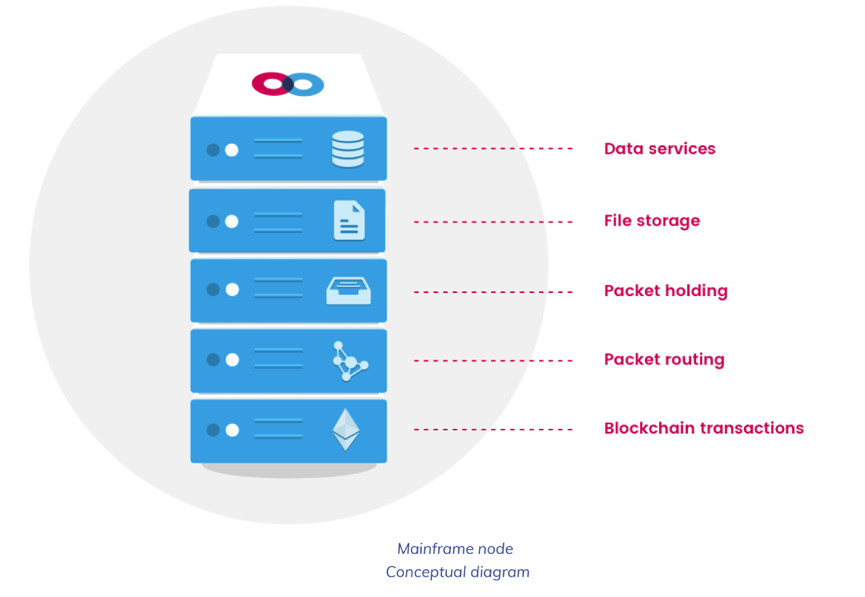
Mainframe’s network is built on five fundamental principles:
- Encryption – Messages must be encrypted in a manner that prevents others from either learning information from the message or identifying the participants. Nodes will encrypt packets they are sending to another node using the public key of the recipient node or a pre-arranged shared key. Mainframe also allows groups shared key negotiation, which cuts down on CPU and network loads.
- Dark Routing – It must be impossible to track or monitor messages. Mainframe prevents this possibility through configurable dark routing which gives nodes the responsibility for selecting the specificity when addressing messages. This is vital as too much specificity increases the possibility of malicious actors while too little specificity delays message transmission. The correct amount is determined through Mainframe’s algorithm. In addition, security is ensured with topic IDs which only allow encryption through group members who have agreed on this beforehand.
- Incentivization – Tokens function to activate the Mainframe network. They incentivize each node to provide bandwidth for packet relay and storage, data services and file storage.
- Peer-to-Peer Architecture – Censorship and reliance on your own infrastructure is not permitted. Decentralized data services allow messaging and configuration settings to be stored securely throughout the blockchain network. Messages can also be stored while the nodes are disconnected.
- Interoperability – Mainframe will be accessible anywhere, on any app, network or blockchain that requires private communication. Secure messaging will reach any blockchain with smart contract support, including Ethereum, RSK and Tezos.
At the end of the year the company released Onyx, Mainframe’s messaging app that operates on the Mainframe network.
The Mainframe Tokens (MFTs)
The total number of Mainframe tokens will be 10 billion, and they will be selling 50% of the total supply during the token (25% of which will go to the company, and the other 25% for growth and adoption of Mainframe).
Tokens bought during the private sale will be released over the next 11 months (31.25%). The remaining tokens (6.25%) are released monthly.
Each MFT will be worth 0.000006 ETH.
The token launch will be announced on the website.
The Mainframe Network
Mainframe’s network operates on the idea of an incentivized packet routing, packet holding, file storage, and data services. It is called swap, swear and swindle.
Incentivized Packet Routing
Nodes receive and deliver packets of information. Using the SWAP protocol (Swarm Accounting Protocol for Service Wanted and Provided), they keep track of how much bandwidth they’ve sent to and received from one another. The nodes manage the accounting process via funds deposited with ERC20 tokens. Once users agree on prices, they too can use the service as their own means of exchange.
Incentivized Packet Delivery
Packet delivery moves across peers in the network with cryptographically certified delivery. Mainframe allows nodes to prove receipt of packets, also known as takeover proof. Nodes that can’t prove delivery of packets are blamed and have to give up their tokens.
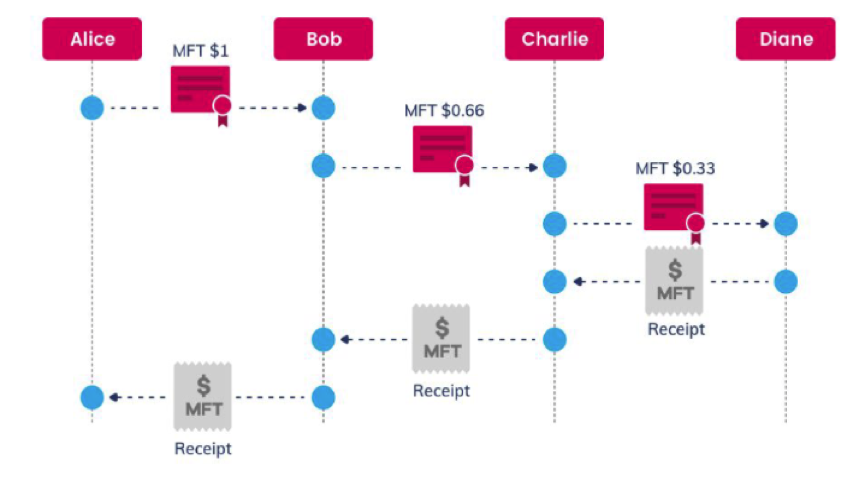
Nodes get receipts that prove delivery of packets. Nodes that can’t prove delivery must forfeit staked tokens.
Incentivized Packet Holding
Mainframe must function even when nodes are disconnected from the network. To ensure this, some nodes must be able to hold packets until the official nodes return online again. Alternatively, nodes can shop around for the best price to have their packet put on hold, enter into a service agreement with them and then update the information in the system. Nodes delegated to hold packets must stake tokens in the case they are not able to hold the packets according to agreement.
Incentivized File Storage
Nodes swear that they are storing chunks of a file by staking tokens. If they fail a storage test, they forfeit their tokens. They gain tokens while file chunks are requested by other nodes.
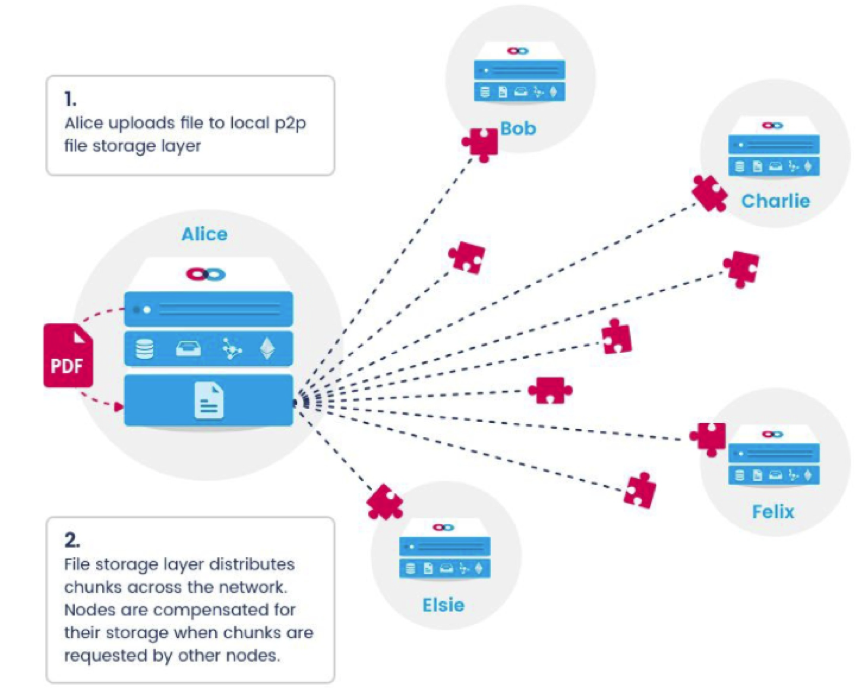
Incentivized Data Services
Mainframe offers incentivized database storage for those times you need to load and save a large file when making changes to it. Nodes can earn tokens for providing this service. Unreliable nodes are punished by having their tokens confiscated. Nodes can request more tokens if they provide greater redundancy (i.e. the better the backup).
The ICO and Roadmap
Mainframe will have three separate phases of their token generation event. The first phase occurred when the Mainframe Telegram group reached 20,000 members.
The company has several milestones which it has outlined in its white paper. This includes a beta version of Onyx with additional features and finally a fully-decentralized communications platform.
